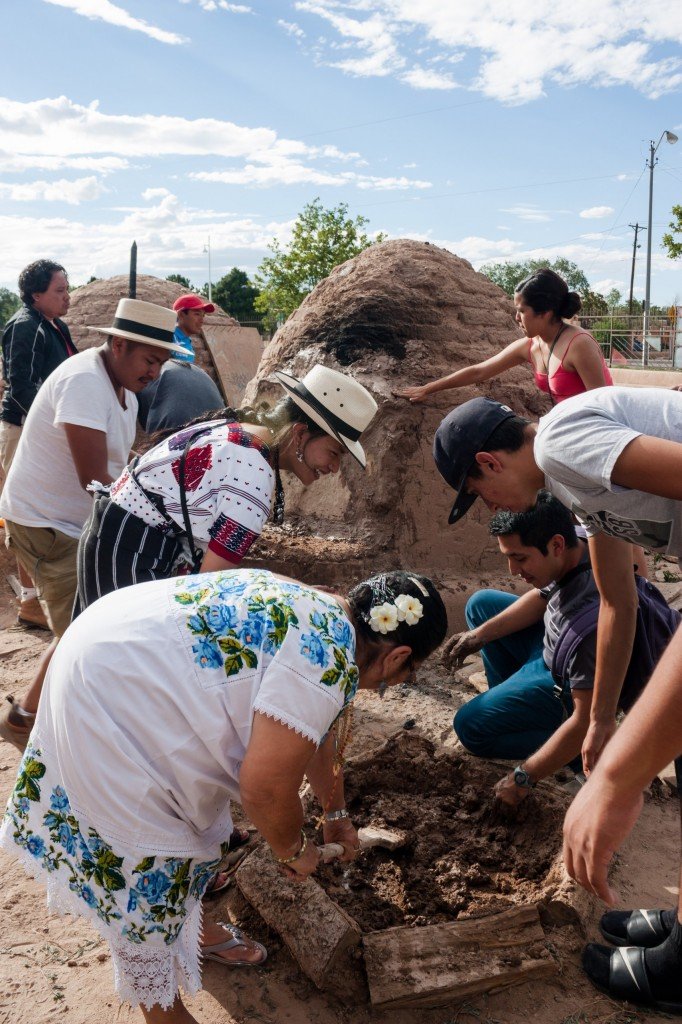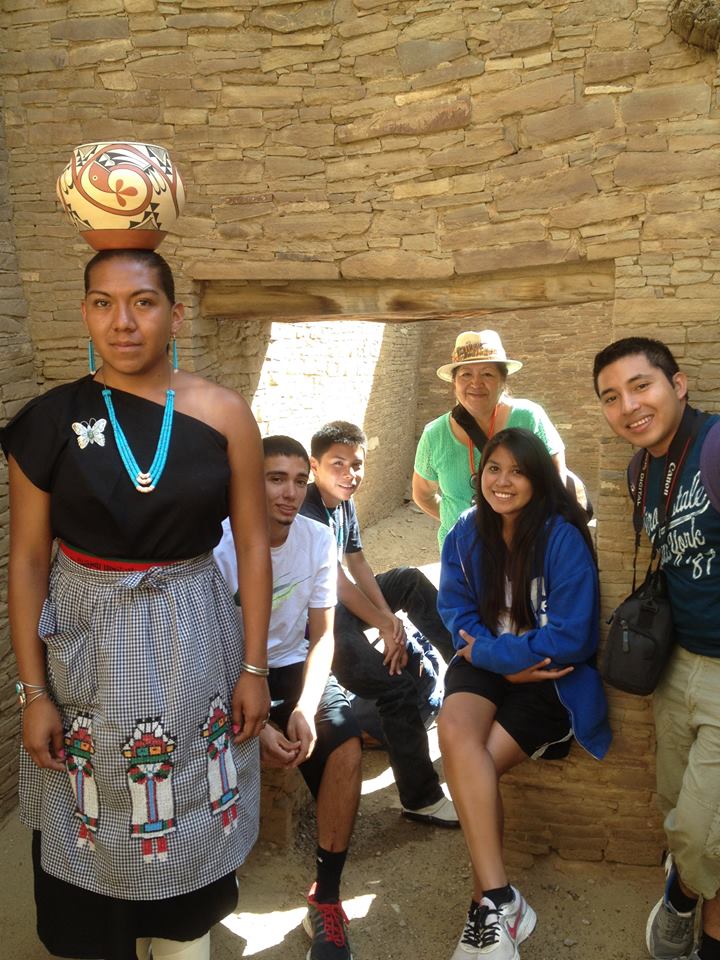On Camping at Chaco Culture National Historical Park and Aztec Ruins National Monument provided an immersive experience to the 49 participants with the opportunity to learn about Ancestral Pueblo culture.August 14-22, Maya and Pueblo youth and elders met for a cultural exchange in New Mexico and Colorado for the Third Pueblo-Maya Cultural Exchange. Visits to three contemporary Pueblos, including Zia, Acoma, and Laguna resulted in lively exchanges about Maya and Pueblo cultural links, including corn, astronomy, medicinal plants, pottery, and other cultural traditions.
The cultural exchange is organized by representatives of the non-profit organizations Native Pathways and Indigenous Education Institute, and supported by Friends of Chaco, the National Park Service (NPS), The Cultural Conservancy, the Laguna, Acoma, and Zia Pueblos, the Government of the Yucatán, Lush Cosmetics, Ideum, and several volunteers.
The experience included outdoor and cultural exchange activities with the goal of fostering learning directly from ancestral lands and sites and from representatives of the various cultures. The main goal of the cultural exchange is to offer participants, particularly youth, an authentic connection with their cultural roots through explicit comparisons, contrasts, and links with other indigenous groups. Our hope is that learning about the legacy of their ancestors in a rich cultural context will motivate participants to preserve the richness of their culture, fostering greater service to their communities.
The group of 49 youth and elders visited three ancestral sites of the Pueblo people–Aztec Ruins National Monument, Mesa Verde National Park, and Chaco Culture National Historical Park–as well as the contemporary Pueblos of Laguna, Zia, and Acoma. These special places offered an authentic context for learning about the scientific and cultural legacy of the Pueblos and serve as ideal settings for exchanging cultural traditions. The participants also learned about Pueblo culture through a visit to the Indian Pueblo Cultural Center. The theme of this third cultural exchange was “science of place.” Within this theme, participants shared many of their traditions, identifying the science embedded within them. For example, Maya participants shared their knowledge of the Maya calendar and astronomy, sustainable agricultural practices and soil chemistry, and the science and engineering knowledge embedded in the construction of their native home. Pueblo participants shared the meaning of their dance regalia in relation to weather and the environment, water management systems, the science of drum-making, the science embedded in their native languages, and the geometry involved in the construction of ceremonial kivas. Representatives from the NPS shared their knowledge of ancestral site resource management, geology, astronomy, and other topics related to the local environment.
Through guided tours, hikes, conversations, demonstrations, and other experiential activities, participants learned about the science of place as practiced by Ancestral Pueblo people at their sacred sites and continued today by contemporary Pueblo descendants. By making comparisons and contrasting cultural traditions, participants identified common ground between the cultures, strengthening their understanding of the importance of their cultural legacy, including science, technology, engineering, and mathematics.
Activities highlighted how ancestral knowledge is relevant and lives today in indigenous communities throughout the world, particularly the groups represented in this cultural exchange. The week included Cultural Exchange Events at Aztec Ruins and Laguna Pueblo. Native communities and organizations that support the cultural exchange attended the events, when Pueblo, Maya and other participants shared traditional dances, special foods, and other customs that highlight the scientific legacy of their cultures.
An important aspect of the cultural exchange activity is the contribution of native elders as presenters during the experiential walks and activities at the ancestral sites and contemporary native communities. Five elders shared knowledge, made presentations, and conducted demonstrations. The support given to the project by Friends of Chaco allowed the participants to enjoy traditional foods and paid for elders’ lodging and honoraria, as well as transportation for the entire group.
The goals of the Cultural Exchange project were met, namely:
- The Third Maya-Pueblo Cultural Exchange was held in New Mexico and Colorado on August 14th to 22nd, 2014. The program engaged 49 participants with the beauty and heritage of Pueblo ancestral sites as well as contemporary Pueblo communities, providing Pueblo and Maya youth and elders with unique opportunities to learn from indigenous elders and ancestral lands.
- The immersive experience served to re-connect the Maya, Pueblo, and other indigenous cultures that have been historically linked through trade routes, migration stories, and exchange of knowledge and the land’s gifts such as corn, cacao, shells, feathers, and turquoise.
- The experience strengthened participants’ connections to the cultural assets of the Southwest and highlighted the importance of preserving ancestral places, native languages, a reconnection to historical relationships, and knowledge systems connected to a science of place.
We invite you to visit the Facebook page of the cultural exchange, where you will find photos posted by the coordinators and the participants of the entire experience. The page can be found at: https://www.facebook.com/ThirdMayaPuebloCulturalExchange



